Essential tips for growing and fertilizing your Hosta plant
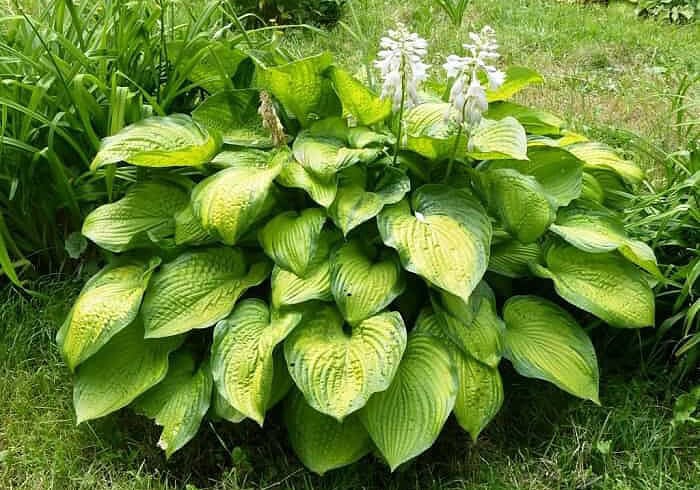
Contents:
- Why Hosta needs fertilizers
- Timing and dosage for fertilization
- Types of fertilizers
- Seasonal care for Hosta
- How to fertilize correctly
- How to care for Hosta to stimulate growth
- Tips from experienced florists
Hosta is easy to care for, but you can get thicker foliage and brighter flowers if you approach the issues of choosing a planting site, watering, and additional nutrition correctly. The ideal soil for the plant is loam, but you can also achieve success on other soils using suitable fertilizer made specifically for Hosta.
Why Hosta needs fertilizers
The plant lives for over 20 years, and in favorable conditions, it becomes more beautiful and voluminous yearly.
Watering is one of the important procedures in the process of growing Hosta. The root system of the plant is located almost on the ground’s surface, so it is necessary to monitor the soil moisture.
The second most important agrotechnical procedure is mulching. It is carried out in the spring (before flowering) and in the fall (after pruning).
Lack of nutrition affects not only the appearance of the plant. Its resistance to diseases, pests and cold is also reduced. The deficiency of important elements can be determined by appearance. If there is a shortage:
- nitrogen – poor growth, yellow leaves, weak shoots;
- potassium – spotted leaves curl, wilt and fall off;
- phosphorus – slow growth, dark leaves, wilted tops;
- calcium – twisted dark leaves with a bluish tint.
If several symptoms are detected simultaneously, it is advisable to use a combination drug.
Not all gardeners are interested in the nuances of agricultural technology, but if you know what fertilizers hosta likes and correctly apply this knowledge in practice, the result will exceed all expectations.
Timing and dosage for fertilization

When choosing what to fertilize the Hosta with, they start from the preferences of the variety and climatic conditions. Top dressing is carried out starting from the end of March. Spring work is aimed at the development and growth of the crop, summer — at strengthening. Approximate timing and options for top dressing the Hosta:
- In the spring, when the snow melts, humus and peat compost are added.
- Throughout the spring and at the beginning of June, use solutions of mineral preparations with nitrogen, fertilizing the soil every 2 weeks.
- In August, the plant needs phosphorus and potassium to strengthen the roots and prepare for winter.
Gardeners develop an individual feeding schedule for Hosta taking into account the age and condition of the crop. Young plantings, if the soil is prepared according to all the rules, do not need fertilizers during the first 2—3 years. Weakened plants are given 2 times more nutrients than indicated in the instructions.
Types of fertilizers
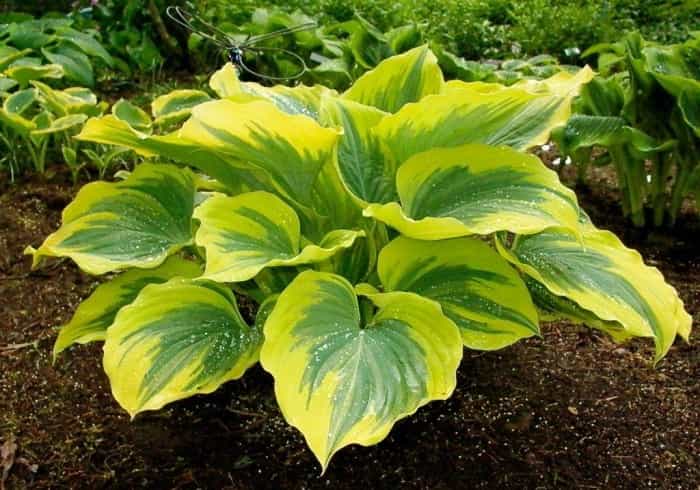
When choosing what to feed the Hosta in the spring for lush growth, consider both organic and mineral fertilizers. All of them stimulate growth, strengthen immunity to diseases and pests, and improve the composition of the soil.
Organic fertilizers
Organics not only enrich the soil with nutrients, but also stimulate the development of soil microorganisms, improve air and moisture exchange. Composition of homemade organic fertilizer for hosts:
- rotted manure;
- remnants of pine needles;
- rotten hay;
- aged compost.
The listed components are mixed with the soil and placed in the planting holes. The soil is mulched, thereby providing additional nutrition and protection from frost, as well as slowing down the evaporation of moisture.
Mineral fertilizers
Granulated preparations are added to the soil from mid-April, and the fertilization is repeated at the end of May and beginning of June. Before fertilizing the plant, the soil is watered abundantly or agricultural work is started immediately after rain.
Options for mineral fertilizers for Hosta:
- potassium magnesia;
- potassium sulfate;
- superphosphate.
The listed fertilizers are applied in granules or liquid form.
The ratio of NPK in fertilizers can be different: in equal proportions or with a predominance of one of the elements. The choice of preparation depends on the season. For example, in the fall I do not use compositions with nitrogen.
Complex preparations
Ready-made complex fertilizers are balanced in composition and ratio of components. It remains only to choose the right one for the intended purpose and dilute with water according to the instructions. There are preparations for rapid growth, as well as those that are used during planting, during flowering and after transplantation.
Alternative methods
Sometimes you don’t need to buy fertilizers. You can use alternative traditional methods and prepare a nutrient mixture yourself.
In the fall, when the bushes are cleared of excess branches and fallen leaves are collected, you can burn the collected garbage and use the resulting wood ash as fertilizer. The solution is prepared from 300 g (11 oz) of ash and 1 bucket of water. The infusion is used for watering (nutrition) or spraying (pest prevention).
Seasonal care for Hosta
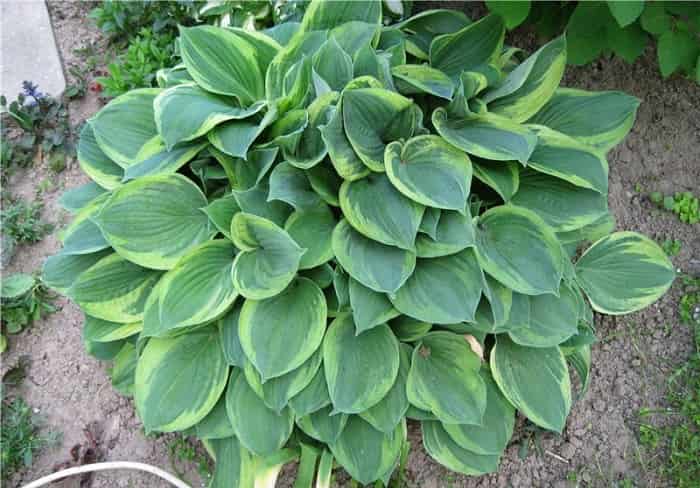
When choosing what to fertilize Hosta with, you need to consider the planting location and soil type: in full sun or shade, black soil or sandy soil. Perennials need a well-drained, loose soil layer. Hostas do not grow so well on sandstones and clay soils. The reason is that clay dries out quickly and sandy soil is unable to retain nutrients.
Hostas do not require care and fertilizers as often as roses, peonies and gladioli. Three feedings per season are enough for a young flower. Adult plants are fed twice a year.
How to fertilize correctly
The process of using fertilizers seems simple: just dilute the selected preparation with water in the required dosage and water the plants with the solution. However, when fertilizing Hosta in the summer, you need to consider the following nuances:
- about 50% or more of useful elements are needed by the crop until mid-summer;
- a fertilization scheme with manure, compost or agrochemicals is drawn up taking into account the condition of the crop and soil;
- Hosta prefers organic fertilizers;
- when using any fertilizer, it is important to water the soil beforehand;
- excessive fertilizers harm the Hosta — it grows poorly and dies.
It is preferable to feed the Hosta using the root method. This eliminates the risk of burning the leaves and buds. It is better not to use the foliar method: the fact is that some Hostas lose the protective wax layer on the leaves after spraying. Otherwise, caring for the flower will not be difficult.
How to care for Hosta to stimulate growth
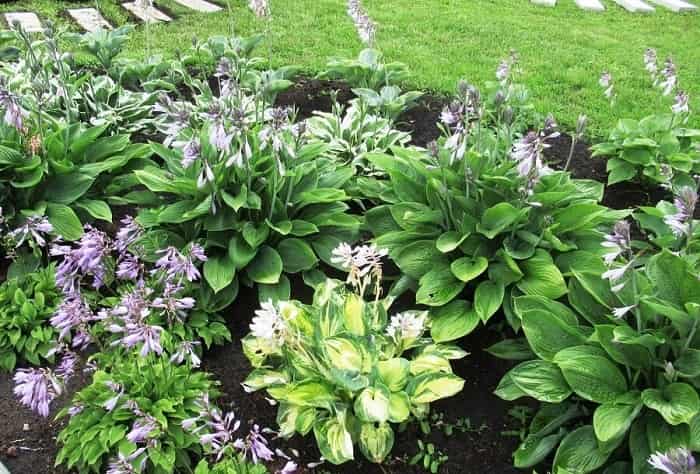
Gardeners with many years of experience recommend using minerals and organics alternately to accelerate the growth of the bush. The latter is used in the fall to nourish the root system for the winter. The following substances accelerate growth: bone meal and wood ash, humus and manure, green fertilizers. You cannot use exclusively nitrogen compounds – the Hosta will lose its decorative effect.
Tips from experienced florists
Listening to the recommendations of experienced gardeners, you can choose the best option for feeding the Hosta in June and July for the best result.
Tips for beginner florists:
- Organic matter is added during digging, calculating the optimal dosage of compost, peat and humus.
- It is better to water the soil and apply fertilizers in the evening, avoiding wetting the leaves.
- Even with regular fertilizing, it is advisable to mulch the soil with organic matter to protect flowers from pests, drought and temperature changes.
- Before using fertilizers, the soil is loosened to speed up the flow of nutrients to the roots.
Fresh manure is not used as fertilizer, as it heats up the soil and destroys the plant’s root system.










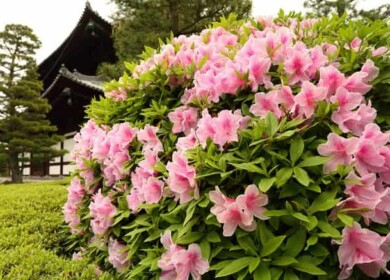

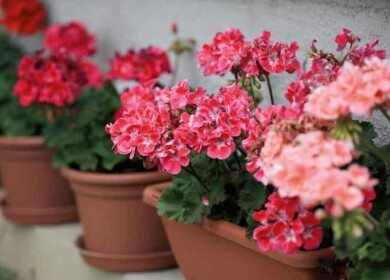
Discussion0 comments